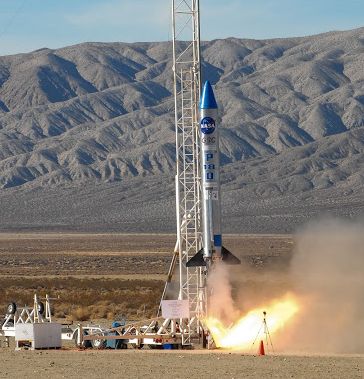
Who says that students can’t participate in the exploration of space? So far, Garvey Spacecraft Corporation’s Prospector 18, or “P-18,” rocket has conducted four missions where it has launched student-built Nano and Micro satellites. While these payloads don’t reach the altitudes that those launched by Prospector’s larger cousins do, they still climb pretty far into the atmosphere.
Garvey Spacecraft Corporation is a California-based company that hefts payloads built by businesses, research firms, and students into the very edge of space. Last December, P-18 entered the “big-leagues” when it hoisted a payload for NASA’s Ames Research Center and California Polytechnic State University. This, however, is just the warm-up for the company’s next effort—a rocket large enough to reach orbit.
NASA funded the December launch through High Altitude Launch Service contract, with the next launch slated to occur in June of this year. During this flight, students at Merritt Island High School and California Polytechnic State University will see their CP9/StangSat sent skyward by the P-18. This particular effort is a partnership between Ames and Kennedy Space Center and will work to develop the new light-weight nanosat carrier system. Keep in mind, satellites that are launched on the P-18 are small—very small.
Each of these nanosats are essentially 4-inch squares that weigh approximately 2 pounds. They were designed to fit on carriers and would be shot loose once the launch vehicle had delivered them to orbit.
“Today, nanosat developers still depend on secondary ride opportunities to get to orbit,” said Garrett Skrobot of NASA’s Launch Services Program. “There are several operational issues with that approach. In response, with projects like this we are taking the first steps with Garvey Spacecraft and other small launch vehicle developers to explore alternatives that could eventually lead to dedicated launch services that are tailored to the requirements of this market.”
This article was produced from a report written by Steve Siceloff at NASA’s Kennedy Space Center in Florida. To see the original article click here: Prospector




2 Comments
2 Pings & Trackbacks
Pingback:High Altitude News Article - PolySat
Pingback:United States and North American News | David Reneke | Space and Astronomy News